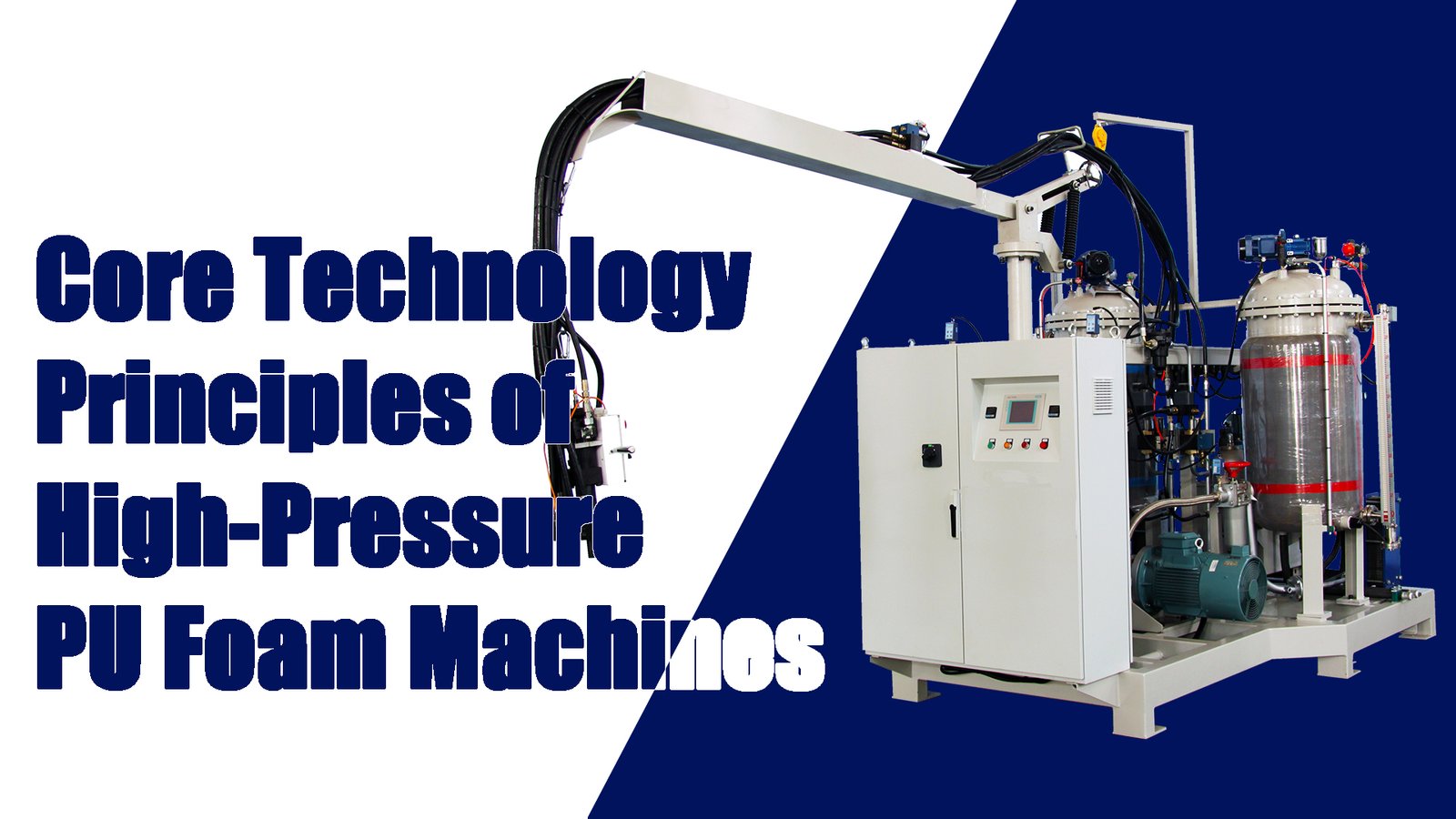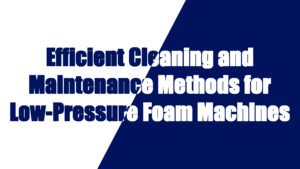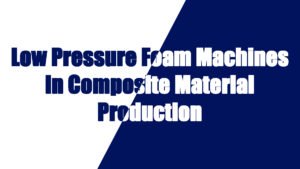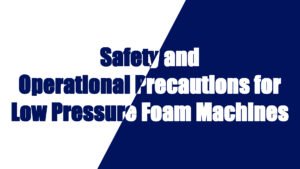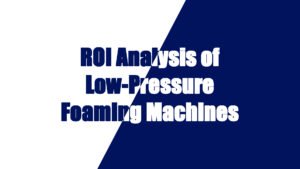High-pressure foaming machines are widely used in polyurethane foam production, especially in industrial environments where high precision, efficiency, and quality are required. The core technology principles include high-pressure mixing head shear principles, precise metering of A/B components, high-speed mixing, and optimized spraying methods. These technologies work together to ensure foam quality, production efficiency, and the final product’s performance. Let’s dive into these principles in more detail.
Shear Principle of High-Pressure Mixing Head
A high-pressure foaming machine mixes A components (polyether polyol) and B components (isocyanate) under high pressure (typically 10-20 MPa) to ensure rapid and uniform mixing. This process involves not only physical mixing but also promoting chemical reactions through high shear forces.
The liquid flow and compression inside the high-pressure mixing head cause intense collisions between the A and B components, creating high shear forces. This step is crucial for effective mixing and the subsequent chemical reaction. Shear forces break up bubbles and liquid droplets, leading to a homogeneous mixture and reducing issues such as uneven foam density and instability in hardness, which can occur if mixing is insufficient.
Moreover, strong shear also accelerates the reaction rate. Since polyurethane foam formation depends on the reaction speed of the A and B components, enhancing the mixing process helps control the chemical reaction, generating more uniform foam structures in a shorter time.
Precise Metering of A/B Components
The precision of the metering system is another critical element in high pressure pu foaming machines. The quality and performance of polyurethane foam are heavily reliant on the A/B component ratio, typically ranging from 100:40 to 100:50, depending on the specific foam requirements. Incorrect ratios can lead to significant issues with foam hardness, density, and other properties.
High-pressure foaming machines are typically equipped with highly accurate metering pumps and flow sensors that precisely control the flow of both A and B components. This ensures that each drop of raw material is within the preset range, preventing excessive or insufficient amounts of materials from entering the mixing head.
The machine constantly monitors the flow and pressure of the components during production, and any fluctuation is automatically adjusted to ensure the ratio is maintained accurately. This level of precision is essential for high-quality foam production, particularly in industries that demand tight tolerances, such as automotive seating, high-end appliances, and aerospace.
High-Speed Mixing
High-speed mixing is another key part of the high-pressure foaming machine’s operation. The A and B components are injected at extremely high speeds into the mixing head, triggering a rapid physical reaction. This process not only accelerates the reaction rate but also ensures uniform mixing in a very short time.
High-speed mixing enables complete reaction between the two components, which is crucial for foam quality. At high speeds, the foam’s cell structure becomes more uniform and fine, reducing the appearance of large air pockets or uneven distribution. This is particularly important in applications with high foam performance requirements, such as insulation materials for buildings, automotive seats, or aerospace components, where uniformity and consistency are paramount.
In addition, high-speed mixing enhances production efficiency. By reducing the mixing time, the production line can operate more efficiently and meet the demands of large-scale production. For instance, when producing high-density foam with low thermal conductivity, a fast and efficient mixing process allows the production line to achieve higher throughput and output.
Spraying Method and Foam Quality
The spraying method plays a crucial role in determining the quality of the foam, particularly in terms of uniformity, density, and strength. High-pressure foaming machines typically come equipped with adjustable spray angles, pressures, and nozzle designs, which can be fine-tuned based on specific application needs to ensure optimal foam deposition.
(1) Spray Angle and Foam Uniformity
The spray angle refers to the direction in which the foam is sprayed from the mixing head. By adjusting the spray angle, the flow of the raw materials can be optimized, ensuring even distribution of foam over the surface. For example, in large-scale foam applications, adjusting the spray angle can ensure a consistent foam layer over the surface, avoiding areas where foam density may be too high or too low.
(2) Spray Pressure and Foam Density
Spray pressure significantly impacts the foam’s density. Higher spray pressure can cause the foam’s cell structure to become finer and more compact, which increases its density. High-density foam tends to have better compressive, tensile, and thermal insulation properties. For applications requiring high load-bearing capacity, such as automotive seating and high-density insulation boards, increased spray pressure ensures the foam is stable and meets performance standards.
(3) Spray Method and Cell Structure
The spraying method also affects the foam’s cell structure. The spray system controls the size and distribution of the foam cells, ensuring uniformity. High-pressure spraying can produce finer, more consistent cells, enhancing both mechanical performance and surface finish. This feature is particularly important in high-end products, such as luxury furniture, high-end appliances, or automotive seating, where the foam’s quality directly influences the product’s market competitiveness.
The core technology principles of high-pressure foaming machines include the shear principle of the high-pressure mixing head, precise metering of A/B components, high-speed mixing, and optimized spraying methods. These technologies work together to produce high-quality, consistent polyurethane foam. Particularly in industries with stringent quality standards, such as automotive, construction insulation, and high-end appliances, high-pressure foaming machines ensure efficient production and foam quality. The design of the equipment, its operating principles, and the precise coordination of control systems not only improve production efficiency but also guarantee high-quality foam for a wide range of applications.


















